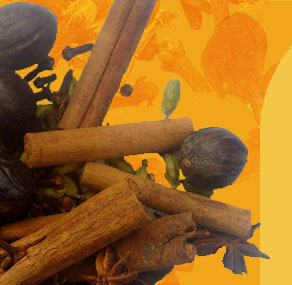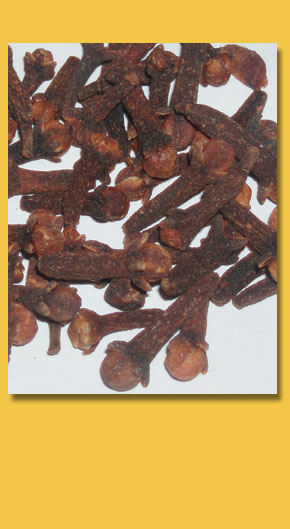
CLOVES
STEMS
Clove stem ( Eugenia caryophyllata )oil are obtained from the clove tree, which is grown mainly in hill country of Sri Lanka.
The oil extraction is based on the steam distillation with the use of clove stem as raw materials.
COCOA
Other names: raw cocoa beans, dried cocoa beans.
COFFEE
A coffee bean is the seed of the coffee plant (the pit inside the red or purple fruit). Even though they are seeds, they are referred to as 'beans' because of their resemblance.
The fruits, coffee cherries or coffee berries, most commonly contain two stones with their flat sides together.
In a crop of coffee, a small percentage of cherries contain a single bean, instead of the usual two.
Cocoa beans are actually seeds from the seed pod of a tree that grows in tropical regions. The tree produces a yellowish red fruit (pod) that contains a white fleshy pulp, which surrounds numerous seeds.
As the fruit matures the pods are cut open to expose the pulp, allowing it to ferment so the seeds can be easily removed. The seeds are then dried by the sun or steam and are processed into chocolate, cocoa butter or cocoa powder.
NUTMEG
The nutmeg tree is a large evergreen native to the Moluccas (the Spice Islands) and is now cultivated in the West Indies.
It produces two spices — mace and nutmeg. Nutmeg is the seed kernel inside the fruit and mace is the lacy covering (aril) on the kernel.
PEPPER
Pepper comes from several species of a vinous plant, the spice being the fruit, called peppercorns. Black pepper is the dried, unripe berry.
The corns are wrinkled and spherical, about 5 mm (1/8 in) in diameter. Malabar and Tellicherry pepper are both considered top quality due to size and maturity. White pepper starts out the same as the black, but are allowed to ripen more fully on the vine. The outer shell is then removed by soaking the berries in water until the shell falls off, or are held under flowing spring water, yielding a whiter, cleaner pepper.
Green pepper is from the same fruit but is harvested before they mature. Pink pepper, which is not a vinous pepper, comes from the French island of Reunion. Pink peppercorns have a brittle, papery pink skin enclosing a hard, irregular seed, much smaller than the whole fruit.
MACE
Mace is the aril (the bright red, lacy covering) of the nutmeg seed shell. The mace is removed from the shell and its broken parts are known as blades.
The history of mace is closely tied to the history of nutmeg for obvious reasons, though the two items have been treated seperately.
Because the yield of mace is much less than nutmeg’s it has had greater value. A pile of fruit large enough to make one hundred pounds of nutmeg produces a single pound of mace.
When the Dutch controlled the Moluccas (the Spice Islands), one colonial administator sent orders that the colonists should plant fewer nutmeg trees and more mace trees
CLOVES
The word ‘clove’ is from the Latin word for ‘nail’ – clavus. The clove is native to the North Moluccas,
The Spice Islands of Indonesia. It is cultivated in Brazil, the West Indies, Mauritius, Madagascar, India, Sri Lanka, Zanzibar and Pemba.
The Chinese wrote of cloves as early as 400 BC. and there is a record from
200 BC of courtiers keeping cloves in their mouths to avoid offending the emperor while addressing him.
Arab traders delivered cloves to the Romans.

